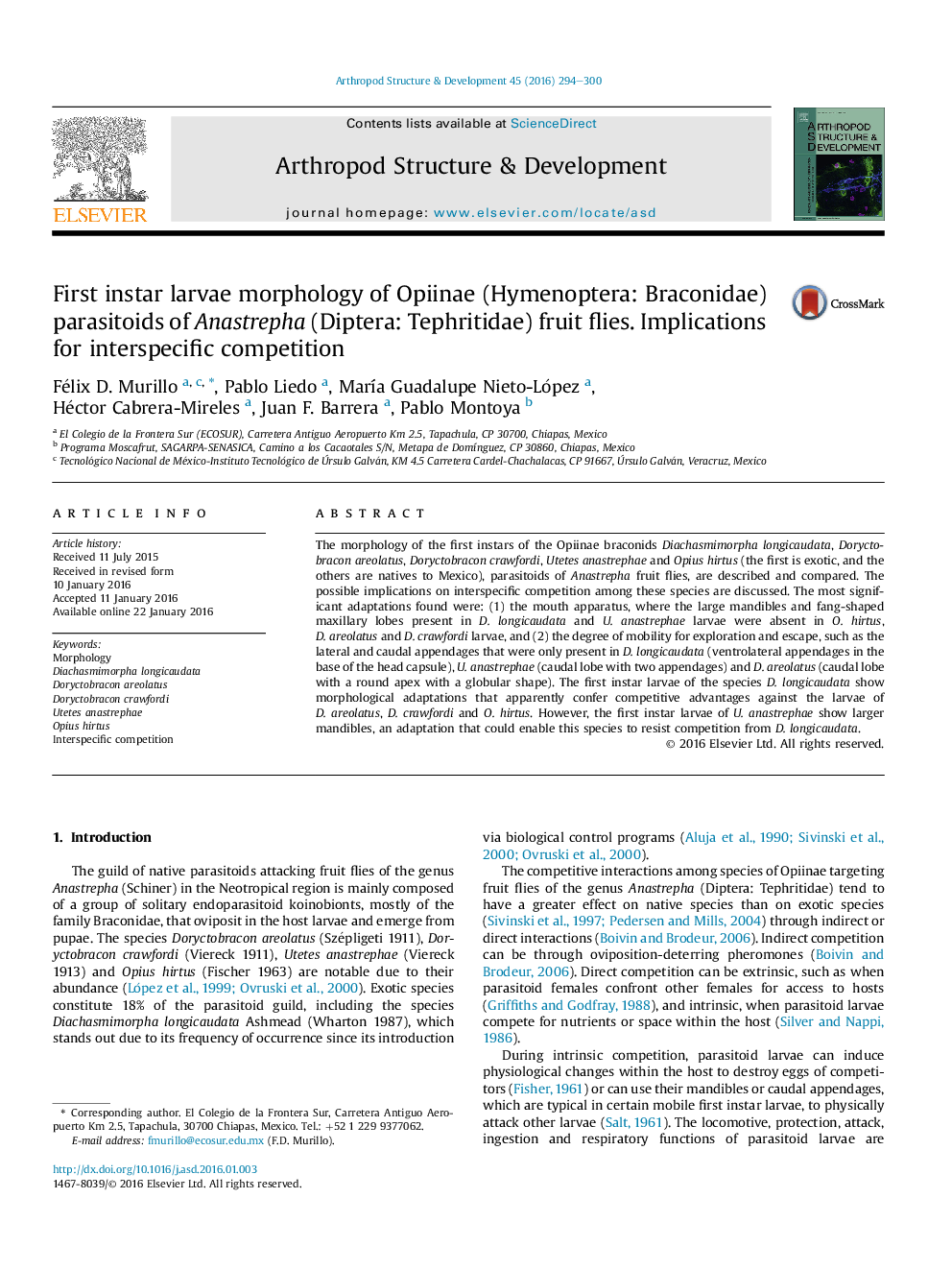| Article ID | Journal | Published Year | Pages | File Type |
|---|---|---|---|---|
| 2778506 | Arthropod Structure & Development | 2016 | 7 Pages |
•Morphological characteristics explain interspecific larval competitive ability.•Mandibles prominent in size for Utetes anastrephae and Diachasmimorpha longicaudata.•Long and thin body evident in Doryctobracon areolatus.•Broad and soft body evident in Opius hirtus making it a poor competitor.
The morphology of the first instars of the Opiinae braconids Diachasmimorpha longicaudata, Doryctobracon areolatus, Doryctobracon crawfordi, Utetes anastrephae and Opius hirtus (the first is exotic, and the others are natives to Mexico), parasitoids of Anastrepha fruit flies, are described and compared. The possible implications on interspecific competition among these species are discussed. The most significant adaptations found were: (1) the mouth apparatus, where the large mandibles and fang-shaped maxillary lobes present in D. longicaudata and U. anastrephae larvae were absent in O. hirtus, D. areolatus and D. crawfordi larvae, and (2) the degree of mobility for exploration and escape, such as the lateral and caudal appendages that were only present in D. longicaudata (ventrolateral appendages in the base of the head capsule), U. anastrephae (caudal lobe with two appendages) and D. areolatus (caudal lobe with a round apex with a globular shape). The first instar larvae of the species D. longicaudata show morphological adaptations that apparently confer competitive advantages against the larvae of D. areolatus, D. crawfordi and O. hirtus. However, the first instar larvae of U. anastrephae show larger mandibles, an adaptation that could enable this species to resist competition from D. longicaudata.
Graphical abstractFigure optionsDownload full-size imageDownload as PowerPoint slide
